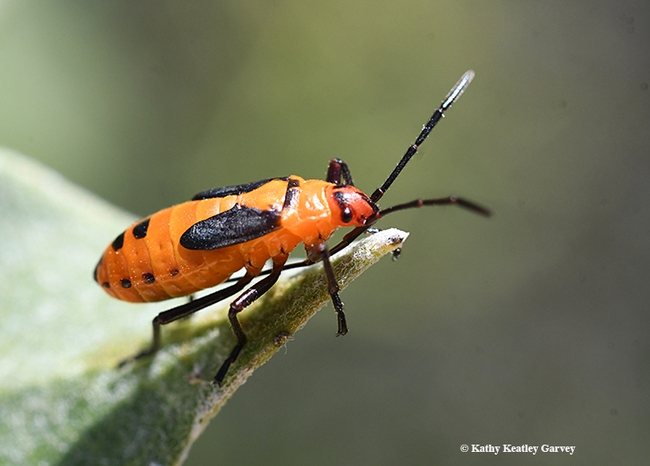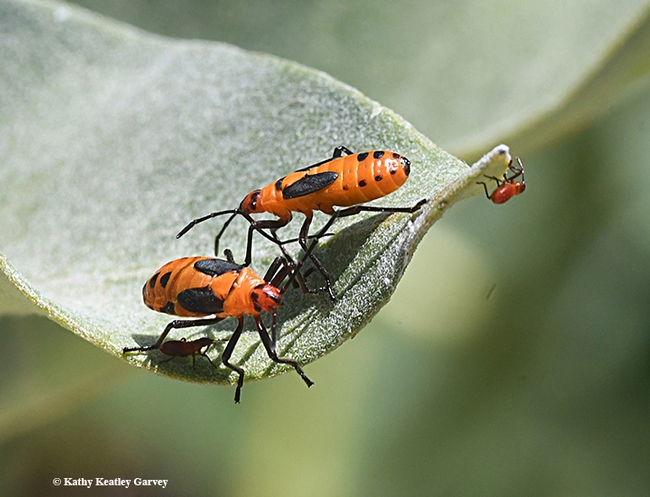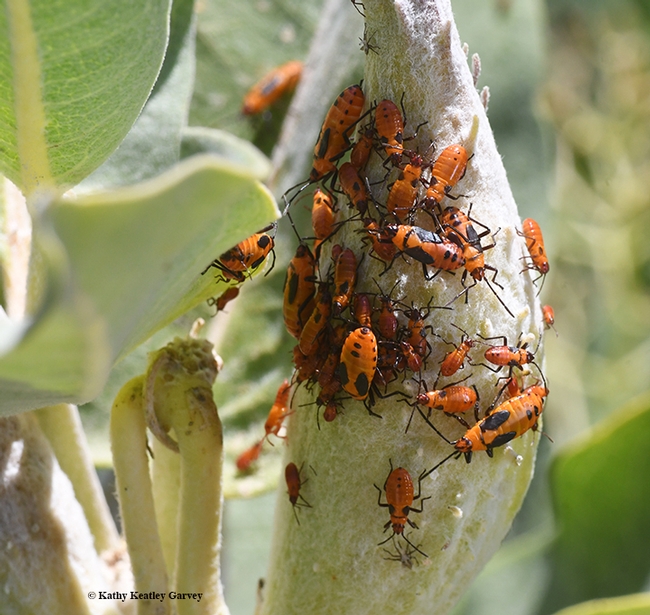If you've been finding more milkweed bugs than monarchs on your milkweed, join the crowd.
Monarchs are scarce--at least around Solano and Yolo counties--but milkweed bugs are quite plentiful. Sometimes you see them massing on milkweed pods as if they're having a family reunion and trying to figure out who's who during an all-you-can eat buffet. They're blood red, in sharp contrast to the green plants.
Have you seen the large milkweed bugs, Oncopeltus fasciatus, and the small milkweed bugs Lygaeus kalmii? Both belong to the seed bug family, Lygaedidae. We recently spotted small milkweed bugs on a patch of showy milkweed (species Asclepias speciosa) in Sonoma.
Milkweed bugs are primarily seed eaters, but they're opportunistic and generalists, says Hugh Dingle, emeritus professor of the UC Davis Department of Entomology and Nematology, an insect migration biologist who also researches migratory monarchs.
"They'll get protein from wherever they can find it," said Dingle, author of the popular textbook, Animal Migration: the Biology of Life on the Move. They eat not only eat seeds, but also monarch eggs and larvae and the immature stages of other butterflies, Dingle told us back in 2016. They eat other small bugs and feed on nectar as well. Some scientists have seen them feeding on insects trapped in the sticky pollen of the showy milkweed. (Read about the opportunist Small Milkweed Bug in the Journal of the New York Entomological Society.)
The bugs feed on the toxic milkweed, rendering them distasteful to predators. Their warning colors (red and black) also tell prospective predators "Leave me alone; I don't taste good. If you eat me, you'll be sorry." They sequester and store cardenolides (cardiac glycosides) from the milkweed.
In the fall, as the seed pods burst open, monarch enthusiasts scramble to collect the seeds for next year, but they usually have to compete with the red invaders.
If they're still around...
Attached Images:

A small milkweed bug Lygaeus kalmii) stands peers over the leaf of a milkweed plant, Asclepias speciosa, in Sonoma County. (Photo by Kathy Keatley Garvey)

Small milkweed bugs mingling on a showy milkeed, Asclepias speciosa. (Photo by Kathy Keatley Garvey)

A mass of small milkweed bugs, red invaders! The blood red color sharply contrasts with the green milkweed pod. (Photo by Kathy Keatley Garvey)